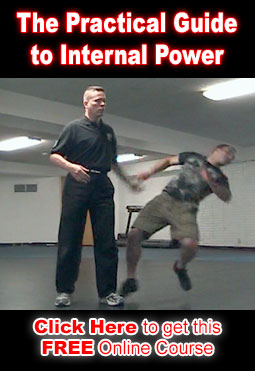The difficult thing about Bagua is it’s variability.
There is a lot of variety out there and it can be difficult for a student to sort out what’s good, what’s bad and what’s just different.
The spreading of poor quality Bagua and misinformation is certainly a contributing factor but with Bagua the problem come right from it’s founder.
Dong Haichuan was known to teach mostly experienced martial artists. He taught them at their level and he built on top of their existing skillset. And so each of his students had very different and distinct flavors of Bagua.
Different branches of Bagua can be very different from one another while still being correct.
..and so how do you tell the difference between a watered down version and one that’s just different?
Good Bagua movement can look flowery and stylized or it can look stupidly simple.
It can look incredibly powerful or downright flimsy.
Forms and drills and postures can all be different.
So what’s the one thing that they all ABSOLUTELY must have to be functional as Bagua?
Time.
…actually a lack of time.
Bagua specializes in dealing with 6-8 attackers.
..and this means you don’t have time.
There are many wonderful skills and techniques that are incredibly effective against one, two or even 3 attackers.
…but as soon as you start using them against more than 3 attackers they fall apart completely.
You simply don’t have time to execute them.
And so that’s the first most basic test for your techniques.
What happens when you try you Bagua while 4 – 6 training partners are trying to get you?
Can you pull it off? (WITHOUT going faster than your training partners.)
..or do you get caught by the other attackers?
Now if it fails that’s OK.
It DOESN’T mean your technique is entirely bad. It just means you are missing a VERY important piece.
Ideally you would learn this piece FIRST but unfortunately it’s left out of the vast majority of Bagua curriculums. Even many experienced players find their techniques begin to fall apart as soon as they add a 3rd or 4th opponent. Much less a 6th or 7th.
This piece is the core of our Bagua workshop in January.
You will learn the essential drills and principles for using Bagua effectively against a group of attackers.
We’ll also get into some important body states and internal power methods but all those are useless if you can only make them effective against 1 or 2 opponents.
This workshop is limited to 16 people.
Reserve your spot now before it’s too late.
